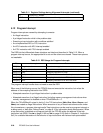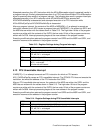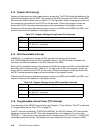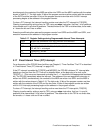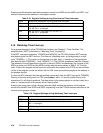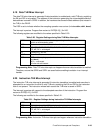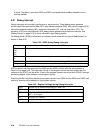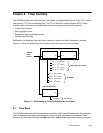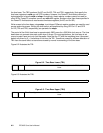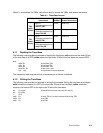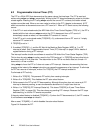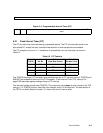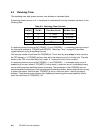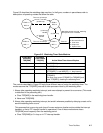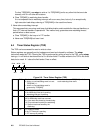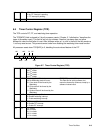
6-2 PPC405 Core User’s Manual
the time base. The TBR numbers (0x10C and 0x10D; TBL and TBU, respectively) that specify the
time base registers to mftb are not SPR numbers. However, the PowerPC Architecture allows an
implementation to handle mftb as mfspr. Accordingly, these register numbers cannot be used for
other SPRs. PowerPC compilers cannot use mftb with register numbers other than those specified in
the PowerPC Architecture as read-access time base registers (0x10C and 0x10D).
Write access to the time base, using mtspr, is privileged. Different register numbers are used for read
access and write access. Writing the time base is accomplished by using SPR 0x11C and SPR
0x11D (TBL and TBU, respectively) as operands for mtspr.
The period of the 64-bit time base is approximately 2925 years for a 200 MHz clock source. The time
base does not generate interrupts, even when it wraps. For most applications, the time base is set
once at system reset and only read thereafter. Note that the FIT and the watchdog timer (discussed
below) are driven by 0→1 transitions of bits from the TBL. Transitions caused by software alteration of
TBL have the same effect as transitions caused by normal incrementing of the time base.
Figure 6-2 illustrates the TBL.
Figure 6-3 illustrates the TBU.
Figure 6-2. Time Base Lower (TBL)
0:31 Time Base Lower Current count; low-order 32 bits of time
base.
Figure 6-3. Time Base Upper (TBU)
0:31 Time Base Upper Current count, high-order 32 bits of time
base.
0 31
0 31



